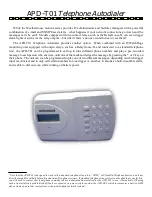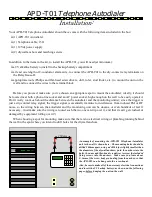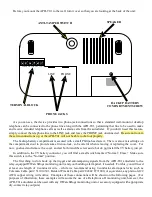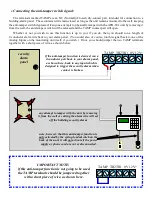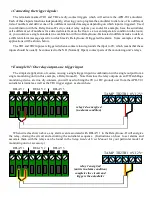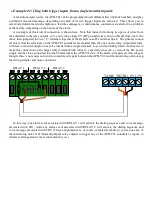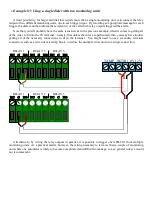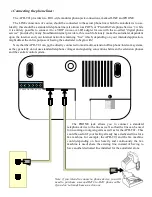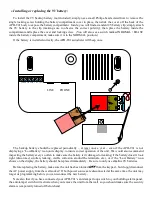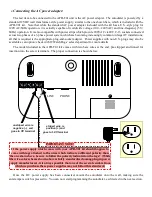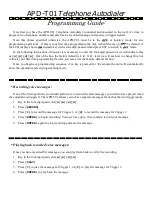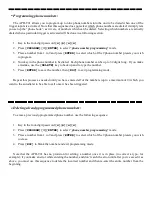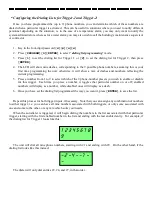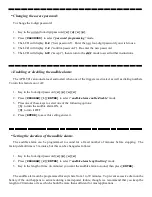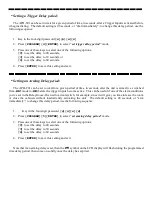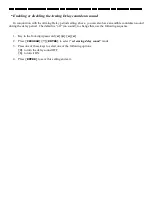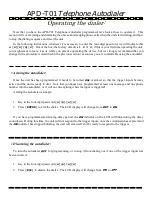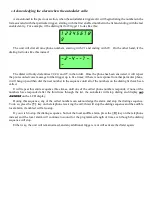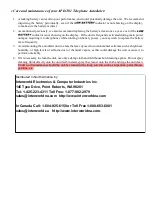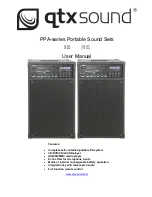
Connecting the trigger signals:
The terminals marked TR1 and TR2 are dry-contact triggers which will activate the APD-T01 autodialer.
Each of these inputs functions independantly, allowing you to program the autodialer to dial one of two different
lists of numbers and deliver one of two different recorded messages depending on which input is triggered. Used
in combination with the RelayGoose-II’s dry-contact relay outputs you could, for example, have the autodialer
call a different set of numbers for a detected water leak on the floor vs. an over-temperature condition in the room;
or, you could use a single autodialer in combination with two RelayGoose-IIs located in different racks to deliver
a different alarm message specific to which rack’s RelayGoose-II triggered the alarm. Some examples of these
applications will be shown below.
The TR1 and TR2 inputs are triggered when a contact closure grounds the input to 0V, which means that these
inputs should be usually be connected to the NO (Normally Open) contact pairs of the monitoring unit’s relays.
Example #1: One relay output, one trigger input
The simplest application, of course, is using a single trigger input in combination with a single output from a
single monitoring unit (in this example, a RelayGoose-II). Note that since the relay outputs on an ITWatchDogs
monitoring device are true dry-contacts, you will need to bring the 0V (or DC ground) over from the APD-T01
autodialer terminals as well as the TR1 trigger signal, as shown here.
NC
NO
C
NC
NO
C
NC
NO
C
RELAY 1
RELAY 2
RELAY 3
NC
NO
C
NC
NO
C
NC
NO
C
RELAY 1
RELAY 2
RELAY 3
When wired as shown above, any alarm event associated with RELAY 1 in the RelayGoose-II will energize
the relay, closing the circuit and activating the autodialer sequence. (Instructions on how to set alarms and
associate them with the relays can be found in the
Setup Guide & User Manual
for your particular model of
monitoring unit or accessory.)
relay 1 de-energized
(no alarm condition)
relay 1 energized
(unit is in alarm condition)
completes the circuit and
triggers the autodialer
TAMP TR2 TR1 0V 12V+
TAMP TR2 TR1 0V 12V+


